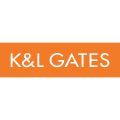Acquiring Workplace Safety in the Data Age Via AI Innovations
By integrating AI tools, companies can preemptively identify risks, enforce safety regulations and fortify the overall security of their workforce.
Workplace hazards persist as a persistent threat to companies, employee well-being and financial stability. To address this, safety managers can harness the transformative power of AI to mitigate risks and bolster occupational health. In 2021, the U.S. Bureau of Labor Statistics (BLS) reported 5,190 fatal work injuries, highlighting the urgency of proactive safety measures. AI, proven successful in finance and marketing, can revolutionize safety protocols.
By integrating AI tools, companies can preemptively identify risks, enforce safety regulations and fortify the overall security of their workforce. This data-driven approach represents a paradigm shift in occupational health management, emphasizing the role of predictive analytics. To fully embrace this transformation, business leaders must assess AI’s diverse applications in industrial safety and cultivate a culture and risk management policies that support the integration of AI for enhanced workplace safety.
Artificial intelligence has revolutionized healthcare and safety occupations by processing extensive data, recognizing patterns and making intelligent decisions, leading to innovations that enhance efficiency, accuracy and overall effectiveness in these critical fields. The following are the various applications of AI in ensuring worker safety:
1. Automation in Safety Occupations
AI and automation are reshaping safety occupations by enhancing traditional processes. AI systems can actively monitor environments, swiftly identify potential hazards like gas leaks or faulty equipment, and provide real-time alerts. Autonomous robots are deployed to execute perilous tasks, minimizing human exposure to risks.
Furthermore, AI-driven surveillance systems with computer vision capabilities detect anomalies, ensuring swift responses to potential safety threats, thereby significantly improving overall safety measures.
2. Safety Technology Integration and AI
The fusion of safety technology and AI has birthed groundbreaking solutions for workplace safety. Wearable devices—embedded with AI algorithms—monitor vital signs, detecting fatigue or stress to avert accidents rooted in human error. Consider the case of forklift operations, where frequent on-off maneuvers result in 35,000 injuries yearly, according to OSHA. AI-driven software analyzes historical safety data, revealing patterns and recommending protocol enhancements, fostering a proactive stance in risk mitigation and safety improvement.



